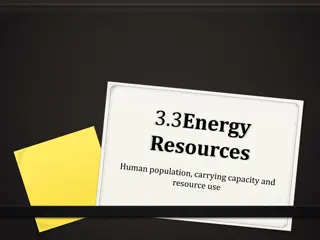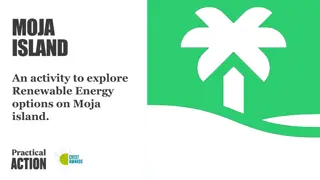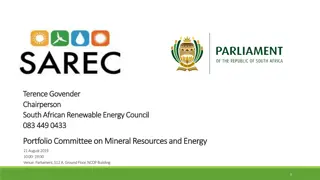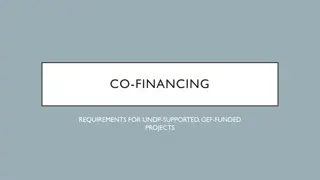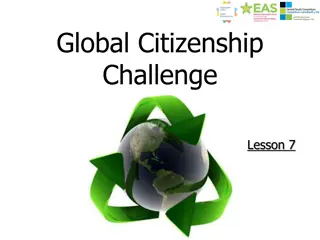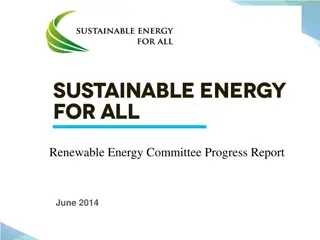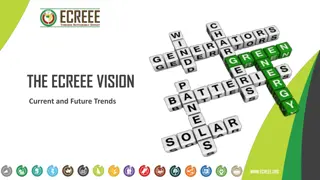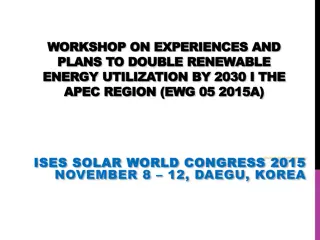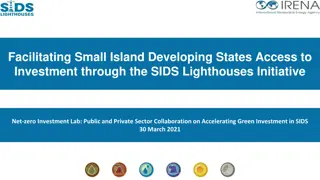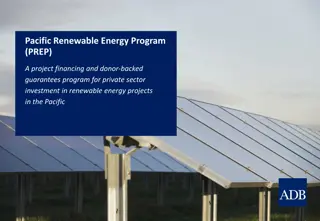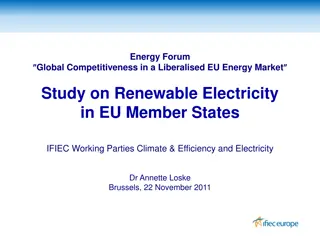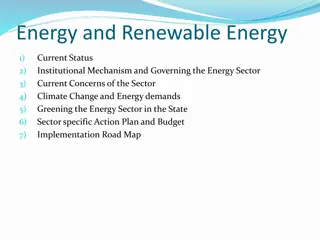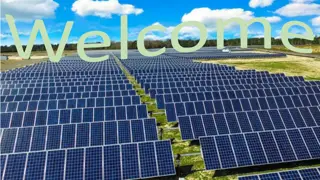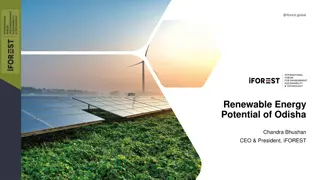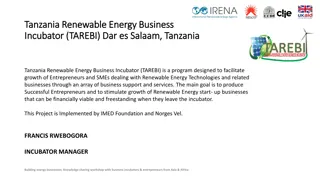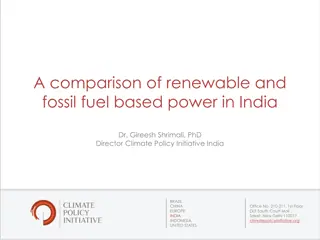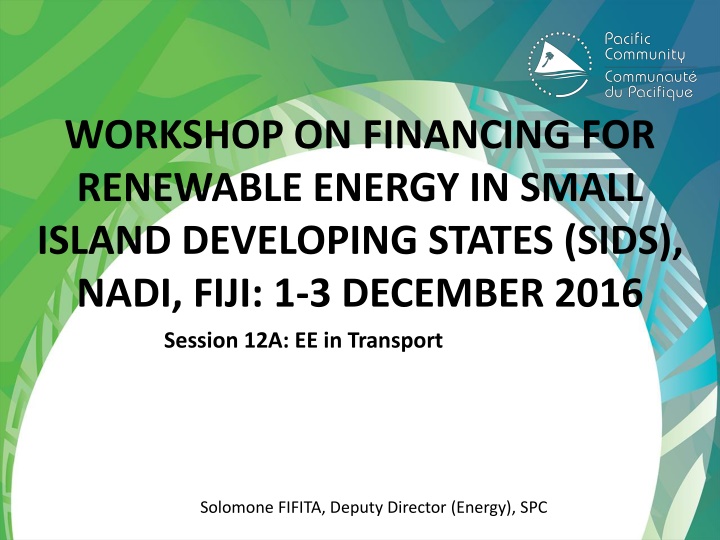
Financing for Renewable Energy in Small Island Developing States
This workshop explores energy efficiency in transport, national energy sector plans compared to NDCs, and strategies for sustainable energy use in the transport sector. It covers targets for emission reductions, renewable energy, and energy efficiency, along with the importance of building a strong business case and implementing climate-friendly transport policies. Various investment modalities and a four-pronged approach to promoting climate-friendly transportation are also discussed.
Uploaded on | 0 Views
Download Presentation

Please find below an Image/Link to download the presentation.
The content on the website is provided AS IS for your information and personal use only. It may not be sold, licensed, or shared on other websites without obtaining consent from the author. If you encounter any issues during the download, it is possible that the publisher has removed the file from their server.
You are allowed to download the files provided on this website for personal or commercial use, subject to the condition that they are used lawfully. All files are the property of their respective owners.
The content on the website is provided AS IS for your information and personal use only. It may not be sold, licensed, or shared on other websites without obtaining consent from the author.
E N D
Presentation Transcript
WORKSHOP ON FINANCING FOR RENEWABLE ENERGY IN SMALL ISLAND DEVELOPING STATES (SIDS), NADI, FIJI: 1-3 DECEMBER 2016 Session 12A: EE in Transport Solomone FIFITA, Deputy Director (Energy), SPC
EE in transport Acknowledged Neglected First Attempt
Energy sector plans vs. NDCs % of current vehicles on fossil fuel % of vehicles on fossil fuel after the programme National EE in transport target % Estimated Reductions in CO2 emissions (tCO2e/annum) Reducing emissions in transportation (including domestic shipping) by 16% in 2025 and 27% in 2030 22% energy sector emissions reductions below 2005 levels by 2025 45% Renewable Energy Target by 2025 35% Energy Efficiency Target by 2025 (in electricity generation, transport and waste) Sector Emission Reduction Targets: Transport, Agriculture, Environment Friendly Waste Management and Reforestation 1. RMI Palau 2. Tonga 3.
Energy sector plans vs. NDCs National EE in transport target % Samoa Efficient, Sustainable, Safe and Cost-Effective Energy Use in the Transport Sector 2.1 Regulate the importation and use of environmentally friendly and energy efficient vessels, motor vehicles and aircrafts; 2.2 Promote fuel efficiency in land and sea transport and ensure systems are reliable, efficient and affordable; 2.3 Promote the use of bio-fuel as a substitute for imported fossil fuels; 2.4 Ensure that energy related Acts and Regulations are enforced to govern supply, use, storage, distribution, disposal and refuelling of fossil fuel and its by-products (sea, land and air transport); 2.5 Enforce Waste and oil spillage strategies (Waste Management Plan) 2.6Encourage competition in the supply and distribution of fuel and ensure quality standards exceeded; 2.7Greenhouse gas abatement through energy efficiency and bio-fuel application in the transport sector 4.
Building a good business case Data Current and planned investments in transport
Implementation modality PEC Fund ADB s PIREIP
4 Pronged approach 1. Support climate-friendly transport policy development 2. Build investment pipelines to improve the flow and quality of Sustainable Transport 3. Unlock more private investment using Climate Finance instruments 4. Increase relevance of technical assistance and capacity building
Partnership Structure UNDP SPC and the PCREEE LTAs and national authorities Interested partners
Proposed Timeline Nadi Dec 2016 Port Vila Dec 2016 Tonga April 2017 GCF June 2017
Questions to be discussed Is there a need for an EE in transport project? Pros and Cons of national vs. regional transport project Comment and elaborate on the paradigm shift Expand on the proposed 4 pronged approaches list specific PIC needs Please discuss the implementation modalities and the required partnerships pros and cons List the current and proposed investments in transport in the PICs Comment on the proposed process and timeline List any other issues the project design should be mindful of




